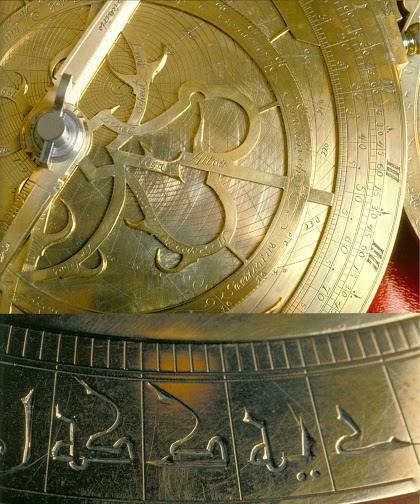
Muslim Astronomers in the Islamic Golden Age
By Aigerim Korzhumbayeva
“…In numbers and equations spinning out their series, Al-Khwarizmi senses the hidden codes of the universe, the numerical representation of the complexity of God’s creation… He writes mathematical problems; he dreams numbers; he reduces every moment of his day to numbers: the number of steps to the bathhouse, the angle of sun to Earth, and the triangle created there, and the curves of the Silk Road wandering across half the Earth…Each evening he awaits the new day’s revelation of mathematics. He lies awake at night up on the roof of his quarters at the House of Wisdom, founded by the Caliph Al-Mamun of Baghdad, watching the half sphere of the heavens orbit Polaris, the middle sky shifting off to the south. Al-Khwarizmi ponders what he has learned the previous day, unable to sleep because of the anticipation of what he will find.” [1]
This excerpt portrays an imaginary recreation of Al-Khwarizmi, a 9th-century Muslim mathematician, geographer, and astronomer, who introduced zero and was the founder of Algebra. In fact, the very name Algebra was derived from his book Al-Jabr wa-al-Muqabalah. He developed the decimal system, and with a slight spelling transformation (Al-Khwarizmi-> al-gwarizm->al-garithm->algorithm), the overall system of numerals, “algorithm”, is named after him. It must be surprising to discover that one of the subjects that students around the world struggle with most, dates back to this 9th-century Muslim scientist. And just as surprising should be hearing that this word algorithm, maybe one of the most frequently used terms in the twenty-first century, again carries deep echoes of the name of a Muslim genius. Al-Khwarizmi was not the only one of high caliber among Muslim scientists. Along with Al-Khwarizmi, throughout its 1433-year history, a plethora of Muslim scientists did groundbreaking works, produced marvelous innovations, and contributed to different fields of science.
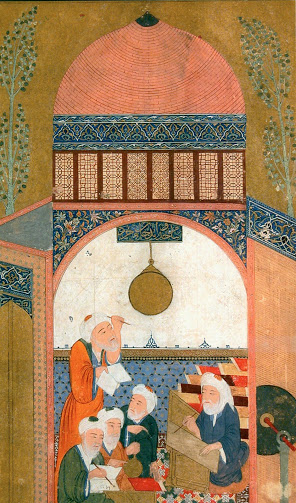
The contribution of Muslim scientists reached its zenith in the Islamic Golden Age (ca. 8-13thcc) when the Islamic world was the center of scientific breakthroughs, innovations, and inventions. Muslim contributions were not populated in one place but dispersed all over Arab lands, Persia, Andalusia, Central Asia, India, and Anatolia. Many of these scientists’ names are known today thanks to saved historical accounts, but some scientists have been forgotten through the long sweep of time and lost historical records. While the history of Muslim scientists in the Islamic Golden Age should be lauded and brought into the light of the modern age, traditional history has placed it in the backstage, keeping it in the shadows only. This so-called backstage has sheltered incredible figures worthy of being put under the brightest spotlights.
To name just a few outstanding scientists, Jabir Ibn Hayyan became “the father of chemistry”; Al-Kindi discovered the science of cryptoanalysis; Al-Rhazi wrote the first soap recipe; Ibn-Al-Haytham significantly developed the field of optics; Al-Biruni is regarded as the key founder of trigonometry; Ibn Sina, or Avicenna, was a leading physician whose book The Canon of Medicine was used as a standard book in universities, both in the East and the West; Al-Idrisi, produced the first known globe for Norman King Roger II of Sicily; Jabir Ibn Aflah designed the first portable celestial sphere; Al-Jazari made mechanical clocks; Ibn Nafis is credited with the discovery of pulmonary circulation; Lagari Hasan Celebi flew the first manned rocket. [2] Most of us are unaware of the nuances of the history of Muslim scientists due to language difficulties, a blur of unfamiliar names and places, a Eurocentric narrative of the Renaissance and later advances, or the burning of historical chronicles and destruction of libraries. [3]
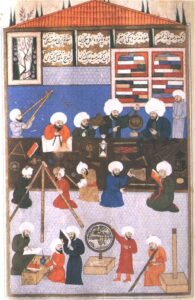
The list of accomplished Muslim scholars of the Islamic Golden Age and their significant contributions to science can go on and on. However, because I cannot capture the immense details of all of their works in one article, I have focused mainly on Muslim astronomers, astronomy being a very fascinating field to me personally and to any curious soul. You will most likely recount memories when you looked at the night sky, deeply intrigued by the grandeur of heaven and orderliness of celestial bodies, thinking to yourself how mind-blowing the universe is. While for some of us the day and night sky are sources of fascination and entertainment, for many scientists, the sky and the cosmos are the sources of knowledge and the keys to secret codes of the universe.
How did Muslims acquire a special interest in Astronomy? Many verses in the Quran mention various natural phenomena in an inspiring way, which has challenged Muslims to ponder about the creation around them and to pursue knowledge by exploring a universe replete with God’s wonders. Here are a few examples from the Quran:
“It is He (God) who created the Night and the Day, and the Sun and the Moon: all (celestial bodies) swim along, each in its orbit”. (Quran 21:33)
“(God) is the One who has set out for you the stars, that you may guide yourselves by them through the darkness of the land and of the sea. We have detailed the signs for people who know”. (Quran 6:97)
“The Sun and the Moon follow courses computed”. (Quran 55:5)
“Verily, in the creation of the heavens and of the earth, and the succession of night and day; and in the ships that speed through the sea with what is useful to man; and in the waters which God sends down from the sky, giving life thereby to the earth after it had been lifeless, and causing all manner of living creatures to multiply thereon; and in the change of the winds, and the clouds that run their appointed courses between sky and earth; (in all this) there are messages indeed for people who use their reason.” (Quran 2:164)
These verses put natural phenomena in the context of their use to mankind as in time keeping and navigation; some verses mention precise orbits and courses, thus passing the message that behind these phenomena lies a coherent system that people are invited to explore. [4] Along with the Quranic verses, interest in astronomy arose because of a practical need for observing religious tenets. First, Muslims needed to determine the times of five daily prayers (dawn, noon, afternoon, evening, and night), which depend on the Sun’s position in the sky. Second, Muslims pray facing Mecca and thus scientists had to figure out the direction of Mecca from any location, which could be done by examining the position of the Sun and Moon. Third, there was a need to compute the lunar calendar and to observe holy practices such as annual fast during the month of Ramadan, attending Hajj (pilgrimage to Mecca) and celebrating Islamic holidays. The Muslim calendar, called hijri calendar(from Arabic word Hijra, emigration), began with the emigration of Prophet Muhammad and his followers in the year 622 from Mecca to Medina. That year is marked as the first year in the hijri calendar. The current year 2012 of the Gregorian calendar corresponds to the year 1433-1434 in the hijri calendar. In a lunar calendar, the months change according to the phases and positions of the Moon. Muslim astronomers had to face a challenging task: a new month did not begin with the new Moon, but with the crescent Moon. Before Muslim scientists developed a mathematical approach, human sightings of the first visible crescent were relied on to mark the beginning of a month. [5] Over a span of time, with the advancement in mathematics and astronomy, Muslims developed scientifically accurate methods based on trigonometric and geometric formulas to calculate the lunar calendar.
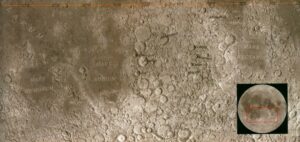
A 9th-century Caliph of Baghdad known as Al-Mamun, undertook the initiation of Muslim astronomy as a science field. In 832 Al-Mamun established an intellectual academy, the House of Wisdom, where works of Aristotle and Ptolemy, Archimedes and Socrates were translated into Arabic; mathematicians and astronomers collaborated utilizing state-of-the-art technology of that day, such as star charts, astrolabes, and sextants. Possibly, today’s equivalent of this House would be research centers. The House of Wisdom drew such scientists as Al-Khwarizmi (mentioned in the excerpt), Al-Farghani and Al-Battani. Al-Farghani is a Persian astronomer born in modern-day Uzbekistan in a city later named after him, Farghana. He determined the diameter of the Earth to be 6,500 miles and also calculated the diameters of planets. Al-Farghani created an Arabic summary of Ptolemy’s Almagest around 833 and wrote Elements of Astronomy (Kitab fi al-Harakat as-Samawiya wa Jawami Ilm an-Nujum), which was translated into Latin in the 12th century. It was from this book that Dante derived the astronomical knowledge displayed in the “Vita Nuova”. [6] Al-Fargani’s Latinized name is Alfraganus, and one day one of the Moon’s craters would be named after him. [7]
Al-Battani was born in Harran ca. 859 in the present-day Turkey. His Latinized name is Albategnius and his well-known discovery is the precise determination of the solar year as being 365 days, 5 hours, 46 minutes and 24 seconds. His outstanding observations of solar and lunar eclipses were used by Dunthorne in 1749 to determine the secular acceleration of the Moon. [8] Al-Battani produced Zij, astronomical tables, which were referred to, 700 years after, by Copernicus in his work On the Revolutions of the Heavenly Spheres, a total of 23 times. His work also included timing of the new Moon, prediction of eclipses, and the phenomenon of parallax. [9]
In addition to the House of Wisdom, Al-Mamun not only built the first observatory in Islam in 828, in Al-Shammasiyah near Baghdad, but he possibly built the first observatory in history. The concept of a fixed location with large and fixed instruments, scientists, and affiliation from the state were new ideas introduced by Al-Mamun. Al-Mamun’s observatories prepared star catalogues as well as solar and lunar tables, which helped in the measurement of planetary positions, lunar phases, and eclipses. [10] Other observatories were built around the Muslim world. Among these observatories, Maragha Observatory in Iran completed by Hulagu Khan, a grandson of Genghis Khan who converted to Islam, stands out. Maragha Observatory was equipped with high-tech instruments, including those collected by the Mongol troops from Baghdad. Nasir Ad-Din At-Tusi was appointed a chief scientist at the observatory by Hulagu Khan, who was deeply impressed by At-Tusi’s knowledge, particularly astrological knowledge. Nasir Ad-Din At-Tusi produced astronomical tables called Ilkhanid Tables (dedicated to Hulagu Khan) and a catalogue of fixed stars, which would be used for a few centuries around the world. At-Tusi used astronomical wisdom of the Chinese in accomplishing his work. Another eminent astronomer employed at Maragha Observatory was Ash-Shirazi, who was the first to give the correct explanation of how rainbows are formed.
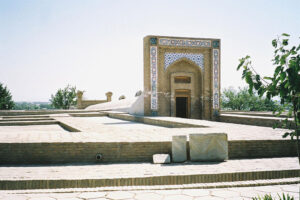
Famous observatories include the Samarkand Observatory in Uzbekistan built by Ulugh Bek, an astronomer, mathematician, as well as a 15th-century ruler of the Timurid Empire. Ulugh Bek’s observatory consisted of three floors for solar, lunar, and planetary observations. It was destroyed by religious fanatics in 1449 but later reconstructed. A tremendous but short-lived observatory was built in 16th-century Istanbul by the request of Taqi Ad-Din to Sultan Murad III. The main building held the library and technical staff, while the smaller building contained a collection of instruments constructed by Taqi Ad-Din, such as giant armillary sphere and a mechanical clock for measuring the position and speed of the planets. [11]
Muslim scientists developed astrolabes, which were astronomical and analogue computers of their time, originating from Greeks. An astrolabehad special significance to Muslims due to its help in determining location and the precise times for daily prayers. The astrolabe was a two-dimensional model of the heavens showing how the sky looked at particular location at a specific time. Astronomers drew the sky on the surface of the astrolabe and marked it with the names of stars so that positions in the sky were easy to find. In the Islamic world, astrolabes remained popular until the 1800s. [12] Muslim astrolabes made their journey to Andalusia and England. 14th-century English poet Geoffrey Chaucer, author of The Canterbury Tales, was enticed by Muslim astrolabes so much that he wrote an essay, which sparked the fascination of Oxford University scholars. Later on, Oxford scholars built their own instruments that incorporated the old Arabic script and Arab names of the stars into their design. [13]
Muslim astronomers carried out extensive work on different stars and constellations. During the Islamic Golden Age, since Arabic language was the lingua franca in the Muslim world, around 3,000 celestial bodies were named in Arabic. Up to date, over 165 stars still echo their Arabic origin in the globally recognized registers of star names. Here I would like to give you an example of my favorite constellation, the Orion constellation, which is one of the most recognizable constellations on the night sky. Although the term Orion itselfrefers to a hunter in Greek mythology, the names of stars that constitute this constellation come from Arabic: Betelgeuze comes from يد الجوزاء Yad Al-Jauza, which means “the hand of al-Jauza”, the first letter “y” being mistransliterated to “b”; Rigel is رجله Rijlah, which means “leg” (some scientists propose that it is the leg of Al-Jauza, i.e. Gemini); Mintaka is منطقة Mintaqah, which means “region”; Al-Nilam comes from النظام An-Nizam, which means “order” or “system”, again with a mistransliteration into Latin; Alnitak comes from النطاق An-nitak, which means “belt” or “band”; Saiph comes from ‘سیف الجبّار’ Saif al-Jabbar, meaning “sword of the giant”. [14] Only the star Bellatrix does not come from Arabic, but from Latin, and means “female warrior”.
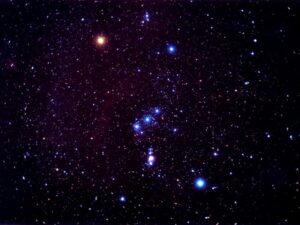 Muslim science, driven by a thirst for knowledge, curiosity, and necessity to observe Islamic practices properly, flourished in the Islamic Golden Age. In this Age, the nature of Muslim science was of a mixed state: scientists came from different Muslim countries, contributing to all fields of science, with many of their works drawing on the wisdom and practices of the Greeks, Indians, Persians, Chinese, and people of other nations. Similarly, the theorems, instruments, and other developments that Muslim scientists left behind provided an avenue for the leap of knowledge of Europeans and thus lay the foundation of the Renaissance. Eminent European scientists such as Roger Bacon, [15] Leonardo Da Vinci, Nicolas Copernicus, and Johannes Kepler drew upon Muslim achievements, which they often referred to in their works.
Muslim science, driven by a thirst for knowledge, curiosity, and necessity to observe Islamic practices properly, flourished in the Islamic Golden Age. In this Age, the nature of Muslim science was of a mixed state: scientists came from different Muslim countries, contributing to all fields of science, with many of their works drawing on the wisdom and practices of the Greeks, Indians, Persians, Chinese, and people of other nations. Similarly, the theorems, instruments, and other developments that Muslim scientists left behind provided an avenue for the leap of knowledge of Europeans and thus lay the foundation of the Renaissance. Eminent European scientists such as Roger Bacon, [15] Leonardo Da Vinci, Nicolas Copernicus, and Johannes Kepler drew upon Muslim achievements, which they often referred to in their works.
Muslim astronomy, once at the hub of global science, was not only significant in Islamic tradition, but it played an enormous role in how we calculate time, measure months, navigate the seas, and locate coordinates in present time. Unfortunately, much of the intriguing history of Muslim astronomers has been scattered to the winds and some of it has never even been heard in the West. In this regard, Muslim astronomers are like supernovae (stars that suddenly increase in brightness, explode, and fade from the view), who were at the center of attention in their time, but were gradually lost from view over the course of history. However, despite their forgotten names, I would claim without hesitation, that the power of their contributions to science is so strong that it is impossible to imagine the present-day astronomy and science without their memories.
We cannot return and maneuver the past, but we can look back in time when we look at the stars and other celestial bodies. In fact, when we look at stars, we see not how they look today, but how they looked thousands or even billions of years ago (depending on how distant the stars are in light years). In a similar vein, many of the technologies and scientific advancements we see today should take us back to their long history and echo of its scientists, geniuses like the Muslim scientists of the Islamic Golden Age who played a crucial role in modern-day science. Maybe the least that we can do when we look at the stars and the Moon is to remember prominent Muslim scientists such as Al-Farangus and recognize that many of their names originate from Arabic. As we look at the sky pondering that we can do the incredible by looking to the past, we may also think about what we can do today to become the supernovae of the future.
Notes:
[1] Michael Hamilton Morgan. Lost History: The Enduring Legacy of Muslim Scientists, Thinkers, and Artists. Washington, DC: National Geographic Books. 2007, 86-87.
[2] Salim T. S. Al-Hassani. 1001 Inventions: Muslim Heritage in Our World. 2nd ed. UK: Foundation for Science Technology and Civilisation. 2007, “Timeline”.
[3] Morgan, op.cit., Introduction XV.
[4] Al-Hassani, op.cit., p.300.
[5] Morgan, op.cit., p.121.
[6] Hakim Mohammed Said. Medieval Muslim Thinkers and Scientists. Delhi: Renaissance Publishing House. 1991, 17-18.
[7] Al-Hassani, op.cit., p.127.
[8] Said, op.cit., p.9.
[9] Al-Hassani, op.cit., p.283.
[10] Al-Hassani, op.cit., p.286.
[11] Al-Hassani, op.cit., p.289.
[12] Al-Hassani, op.cit., p.294-295.
[13] Morgan, op.cit., p.125.
[14] James B. Kaler. “SAIPH (Kappa Orionis)”, Stars. University of Illinois.
[15] Patrick Hunt. “Roger Bacon” Great Lives from History: Inventors and Inventions, vol. 1. Salem Press, 2009.
- Aga Khan Delivers Ogden Lecture at Brown University
- His Highness the Aga Khan’s Speech to the Parliament of Canada
- Aga Khan’s Decorations and Degrees – Honored in 50 Countries!
- Aga Khan, speaking at Brown, sees virtue in social media, Internet — Providence Journal
- Aga Khan stresses importance of pluralism – Ogden Lecture at Brown University
- Baccalaureate Address at Brown University Delivered by His Highness the Aga Khan – May 1996
- His Highness the Aga Khan Speaks at MIT Commencement – Massachusetts Institute of Technology graduation exercises at Killian Court on Friday, May 27, 1994
- Fourteen Proofs of the Necessity of lmamat — Kirmani
Related
- Muslim Astronomers in the Islamic Golden Age
- Medicine and Pharmacy under the Fatimids
- Free Will in Ismaili Shi’ism
- The Origins of Shi’sm: A Consensus of Western Scholarship by Jonah Winters
- Ismaili Theology: The Prophetic Chain and the God Beyond Being by Wilferd Madelung
- Nasir al-din Tusi
- Ismaili Dai and Poet Al-Mu’ayyad
- Majalis-ul Muayyadiya – by Al Muayyad fid-din Shirazi
- Fourteen Proofs of the Necessity of lmamat — Kirmani
- Free Will in Ismaili Shi’ism and Free Will in Twelver Shi’ism
- Reincarnation or Companionship on High?
- Ismaili Heroes
- Nasir Khusraw Collection
- Qadi Numan’s Majalis
- Philosophical Significance of the Imam in Ismailism
- Beyond Polemics and Pluralism: The Universal Message of the Qur’an — Reza Shah-Kazemi
- Imam and Imamat — Allama Hunzai
- The Holy Quran in the Ginanic Literature – Rashida Noormohamed-Hunzai
- A Bridge Between Two Epochs — Aga Khan III, by Rashida Noormohamed Hunzai
- Music in Persian Mysticism — Henry Corbin
- Yaqub Sijistani Ismaili Theologian
- Philosophical Significance of the Imam in Ismailism